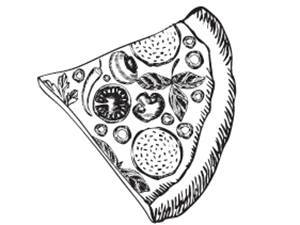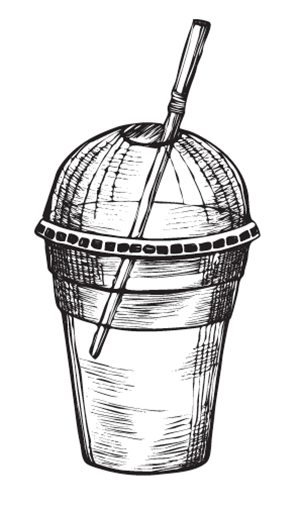 Increasing foodservice profit dollars, supply issues and managing costs and waste are top challenges for today’s post-pandemic convenience retailers, but two industry veterans see these concerns as opportunities and want to help c-stores find their special sauce.
Increasing foodservice profit dollars, supply issues and managing costs and waste are top challenges for today’s post-pandemic convenience retailers, but two industry veterans see these concerns as opportunities and want to help c-stores find their special sauce.
Think like a restauranteur—not a retailer, advise Joseph G. Chiovera and Jeff Foley. Chiovera is founder of XS Foodservice Solutions and executive consultant to Premium Brands Holdings, and Foley is general manager of JF Heritage Food Company, the fresh food commissary for CEFCO stores. The foodservice pros shared their insights ahead of headlining the “Menu Optimization: Think Like a Restaurant” education session October 1 at the 2022 NACS Show.
THREE PHASES
Chiovera believes that creating a flourishing foodservice program occurs in three phases. The first is “Foundation Before Differentiation.” This involves strategically planning the program, creating product specifications, establishing standards and training staff, among other things. It’s a lot to tackle, but program implementation should not be rushed.
“Many companies want to jump into a foodservice program,” he said. “They think
it’s easy, but they try to run it like a retailer, and they fail. I call them the ‘margin watchers’ because they try to manage margins. They don’t understand the burden that foodservice puts on a facility and the risks that are associated with the reward, which is high margin if you pull it off correctly. It’s all about sales in units—not necessarily dollars.”
The second phase is “Building a Culture of Simplicity,” which is where the industry is now, Chiovera said, noting that this phase “includes menu rationalization, labor optimization, product optimization, tweaking your retails and doing what you do best and not much more.”
The menu drives everything."
Chiovera said the “Simplicity” phase requires making tough decisions about operations and points to foodservice winners like McDonald’s, Chick-fil-A and Panera Bread as positive examples. “They serve the same stuff every day. They have limited menus, and they do it fantastically,” he said. When a foodservice operator reaches that point, “you go from driving sales in units to driving gross profit dollars. You cut your losses and go with the high-margin items that you do very well.”
Raising Canes, a chicken-finger QSR, is a model of simplicity with only four items on the menu, he said.
“The menu drives everything. Some people in the industry build a kitchen before they even have a menu. That’s like building the latest car and having the engineers start the design with the stereo system. Once you get the menu situated and you’ve conveyed this to the consumer, you can schedule your labor around that,” Chiovera said.
This also is a good time to take a look at expenses. “If you sell a lot of fried chicken, you can negotiate better pricing on chicken,” he said. “Then, you push it out the door and increase gross profit dollars. Plus, you will find different ways to serve that chicken. Serve it on a bun. Have it in a box ready to go. Make it available as a call-in order.”
After the centerpiece of a chain’s foodservice program is identified, it’s time to get aggressive with marketing. “Some say ‘if you build it, they will come,’” said Chiovera. “No, they won’t. Not in the days of social media and with all the competition on the street, you must tell your customers what you do. Today it’s all about unit volume, throughput and more people coming through your doors.”
The third and final phase of foodservice success is “Nurturing Greatness.” You’ve achieved some level of success, and “you’ve earned the right to manage margin,” he said.
Today, foodservice employees are becoming assemblers as opposed to someone who is cooking stuff."
Chiovera wants audience members to walk away from the NACS session with several ideas they can take back to their stores to help simplify their foodservice operations. “I know the struggles of not having labor and of having poor execution,” he said. “I’ll speak to utilizing the supply chain and vendors and segmenting categories within categories.”
He’ll also highlight the value of fully cooked proteins in the kitchen. “Today, foodservice employees are becoming assemblers as opposed to someone who is cooking stuff,” Chiovera said. “That’s where the restaurant industry is going.”
TALKING TACTICS
For Foley, it’s all “about being innovative while being simple,” he said. That means taking actionable steps to reduce labor, ease execution, invest marketing dollars, increase sales and boost buying power.
During the past two years, the Texas-based chain with 200-plus locations has added its proprietary CEFCO Kitchen concept to all new and many existing locations. The Kitchen includes a full-serve kiosk with touch-screen ordering that lets customers custom design their made-to-order meals and snacks.
The chain makes menu decisions by utilizing consumer information provided by vendors, and the company’s marketing department is planning customer focus groups. Retailers with a winning program know who their customers are and what they want. “But we’re not trying to be all things to all people,” said Foley.
Like Chiovera, Foley believes in differentiating his stores’ foodservice from competitors by “doing it better than everyone else. When CEFCO looked at its brand strategy, we decided to be known for fried chicken tenders and tacos,” he said.
To reduce costs, control waste and keep it simple, CEFCO cross-utilizes pantry items. “We can come up with a great signature sauce and create a buffalo ranch chicken sandwich, and we can use different sauces to make great LTOs,” he said.
 “We can add a Mexican-inspired sauce or Asian-inspired sauce to come up with all the big and bold flavors, and we can use them as a dipping sauce, topping or mix them in with our base chicken or steak products or carnitas. We keep the costs down thanks to mass purchasing power for our base ingredients,” he said.
“We can add a Mexican-inspired sauce or Asian-inspired sauce to come up with all the big and bold flavors, and we can use them as a dipping sauce, topping or mix them in with our base chicken or steak products or carnitas. We keep the costs down thanks to mass purchasing power for our base ingredients,” he said.
One example of using that purchasing power occurred over the summer when CEFCO offered brisket sandwiches and burritos in all stores.
“Our vendor wanted us to buy a lot [of brisket]. We figured we could take a little more off them if we could get a good deal through rebates, which we did,” Foley said. “We worked with our distribution vendor, who agreed to hold the brisket until we needed it, so we were able to take it all at once.”
The company then developed a promotion that offered a free brisket product to customers when they downloaded the CEFCO Reward App, which lets them earn points for redeeming for prizes and paying touch-free at the pump. “We were basically giving away brisket for free to customers all summer,” he said.
To enhance the offer, CEFCO leveraged beverage vendors—The Coca-Cola Company, PepsiCo and Keurig Dr Pepper—and offered to post their company images on store fountains and billboards on a by-market basis and on social media in exchange for products. “Then we went to Frito-Lay and said we wanted to give away a bag of chips,” Foley added.
The promo, which ended up offering a complete meal for free, was a hit and boosted rewards program membership 500%. “We’re negotiating with vendors all the time,” Foley said. “We have a lot of channels, and we can help them, too, with digital marketing. We market every way we can.”
CEFCO constantly seeks new ways to reduce foodservice costs and is currently bringing bulk meats into the commissary for staff to prep.
Stores that try to do one or two things very well are the ones that will succeed."
“A lot of labor goes into preparing food products for assembly, and we’re weighing the cost of that,” Foley said. “We work all the numbers and make sure we do what’s best for the customer. For example, we bring in a premium chocolate icing for our chocolate donuts. That’s going to be the cost of doing business, but we’ll make it up in volume. We know which products we can pay a little more for and still charge a great price to our customers because we’ll get that back in volume.”
GOOD MENU, GOOD VALUE
CEFCO’s menu includes staple items like crispitos, egg rolls, burritos and corndogs and nine types of kolaches, the popular Czech pastry filled with meat, cheese or fruit. “Customers can select two items for $3.79, and the products are interchangeable,” Foley said. “There are over 20 items they can mix and match, and customers will mix and match kolaches with hot grab-and-go items like burritos. With a soda, they have a $5 lunch, which is a great deal. Right now, people don’t have the disposable income they had a year ago.”
Moving forward, “you’re going to see more operators finding partners who will grow with them,” Foley predicted. “You’ll also see some c-stores try to do a little of everything, and that’s where they’ll fail. Don’t try to be everything to everybody. Stores that try to do one or two things very well are the ones that will succeed.”
Throughout the process of growing your program, you have to also keep your organization’s long-term strategic goals top of mind, Chiovera said. “You will have to convince your executive team that [creating a foodservice program] will take time,” he added. “To go from being a petroleum retailer to a being foodservice operator is not something you do on the side of the desk. Foodservice is a risk/reward category, and it’s not for the faint of heart.”